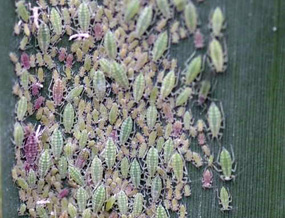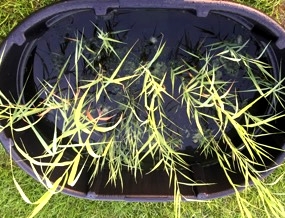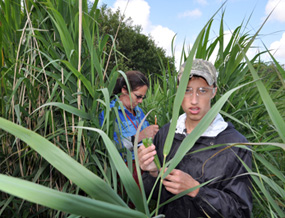Roseau cane (Phragmites australis) Dieback
in the Mississippi River Delta
The factors limiting the restoration of Phragmites in areas of dieback
One of our USDA-funded objectives has been to assess the possibility and feasibility of actively restoring Phragmites in areas that have been subjected to dieback. Based on the thesis research by my M.S. student Herie Lee (Lee et al. 2024), we knew that chemical composition of dieback soils were quite different from healthy soils (Fig. 1) and that Phragmites plants potted in dieback soils had 16% lower biomass than plants grown in healthy soils.

Herie’s study suggested that, at least in the short term, it may be difficult to get Phragmites to re-establish in former dieback sites. With this in mind, we conducted a restoration trial to assess whether one of the three Phragmites lineages (Delta, EU, Gulf) or another plant species could successfully establish and grow in former dieback sites. We obtained support from the U.S.D.A Coastwide Vegetative Planting Project (LA-39 CWVP Year 7A) and conducted restoration trials at nine sites in the Pass-a-Loutre Wildlife Management Area (Fig. 2). The trials were initiated in the fall of 2018.

Results from this study were summarized in Lee et al. 2023 and so only a brief account is provided here. Plantings at each of the 9 sites were monitored for 32 months during which time, we surveyed plantings for survival, growth and infestation by a scale insect that has been implicated in Phragmites dieback. Survivorship differed considerably among plant types and by 6 months, Delta, Gulf and California bulrush (Schoenoplectus californicus) had twice the survivorship of the other plant types. By the end of the study, Delta, Gulf and bulrush were the only plant types alive, with Delta persisting in more than twice as many sites and having > 6 times more area of coverage as Gulf and bulrush (Fig. 3). For all Phragmites lineages, water depth was negatively related to survivorship. Finally, although scale insects achieved twice the abundance on Delta than the other lineages, we found no evidence that scales were inhibiting the growth and survival of Phragmites. Despite potential negative legacy effects of dieback, Delta can be used to revegetate shallow-water sites within a year following dieback.

Finally, during the 2025-26 seasons, we plan to conduct another set of restoration trials designed to assess whether restoration of dieback sites now occupied by taro is possible. In these trials, we will assess whether restoration requires the removal of taro and/or the neutralization of the taro-soil microbes that are toxic to Phragmites (see above).





